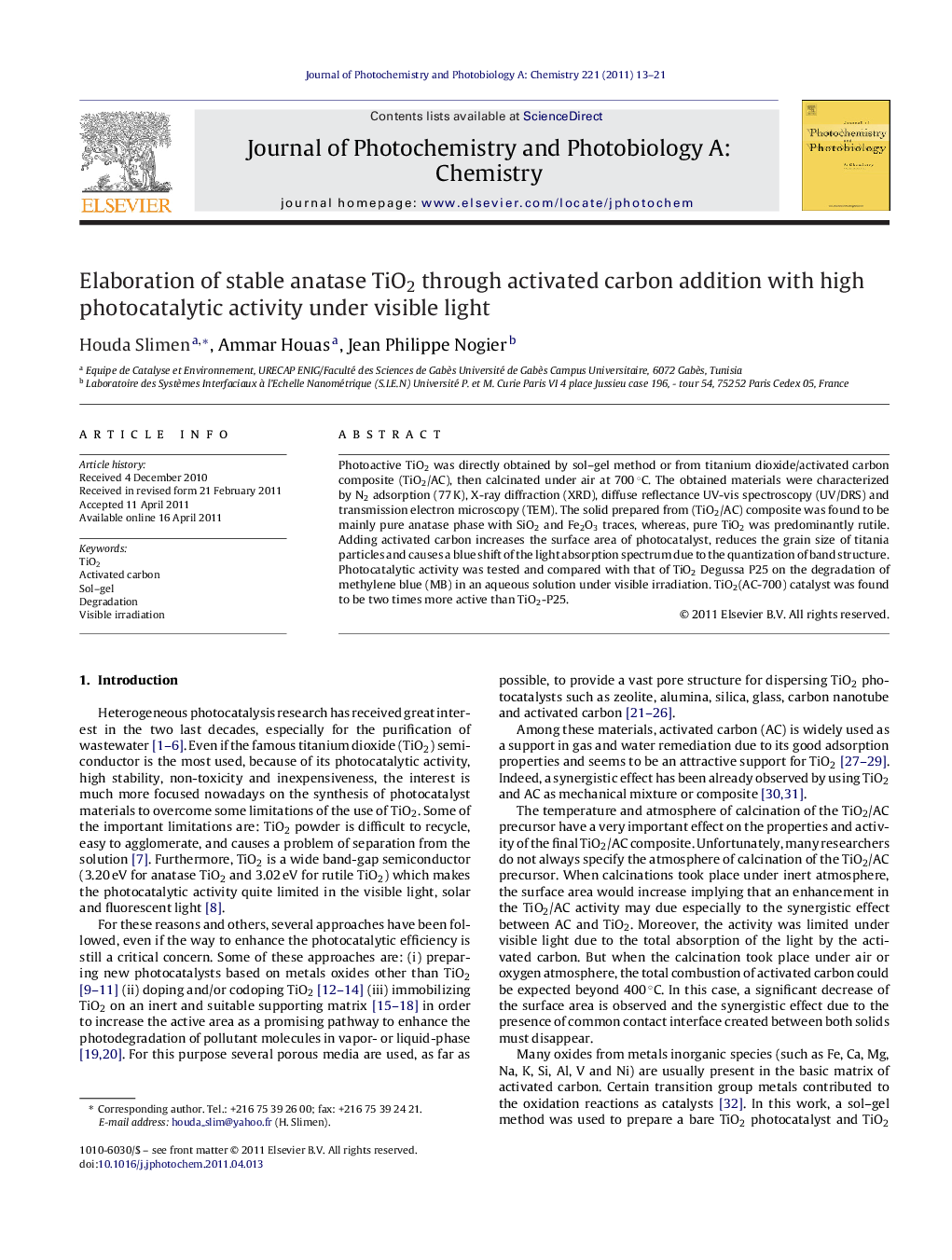| Article ID | Journal | Published Year | Pages | File Type |
|---|---|---|---|---|
| 27531 | Journal of Photochemistry and Photobiology A: Chemistry | 2011 | 9 Pages |
Photoactive TiO2 was directly obtained by sol–gel method or from titanium dioxide/activated carbon composite (TiO2/AC), then calcinated under air at 700 °C. The obtained materials were characterized by N2 adsorption (77 K), X-ray diffraction (XRD), diffuse reflectance UV-vis spectroscopy (UV/DRS) and transmission electron microscopy (TEM). The solid prepared from (TiO2/AC) composite was found to be mainly pure anatase phase with SiO2 and Fe2O3 traces, whereas, pure TiO2 was predominantly rutile. Adding activated carbon increases the surface area of photocatalyst, reduces the grain size of titania particles and causes a blue shift of the light absorption spectrum due to the quantization of band structure. Photocatalytic activity was tested and compared with that of TiO2 Degussa P25 on the degradation of methylene blue (MB) in an aqueous solution under visible irradiation. TiO2(AC-700) catalyst was found to be two times more active than TiO2-P25.
► TiO2(AC-700) exhibit a high activity to degrade the MB dye under visible irradiation. ► TiO2(AC-700) composite was found to be mainly pure anatase phase at high temperature with SiO2 and Fe2O3 traces. ► Activated carbon matrix counterworked the growth of TiO2 particles, prevented the agglomeration TiO2 particles, retarded the transformation from anatase to rutile phase and may produced a doping or/and junction effects by some structural AC mineral oxides, such oxide at least SiO2.
